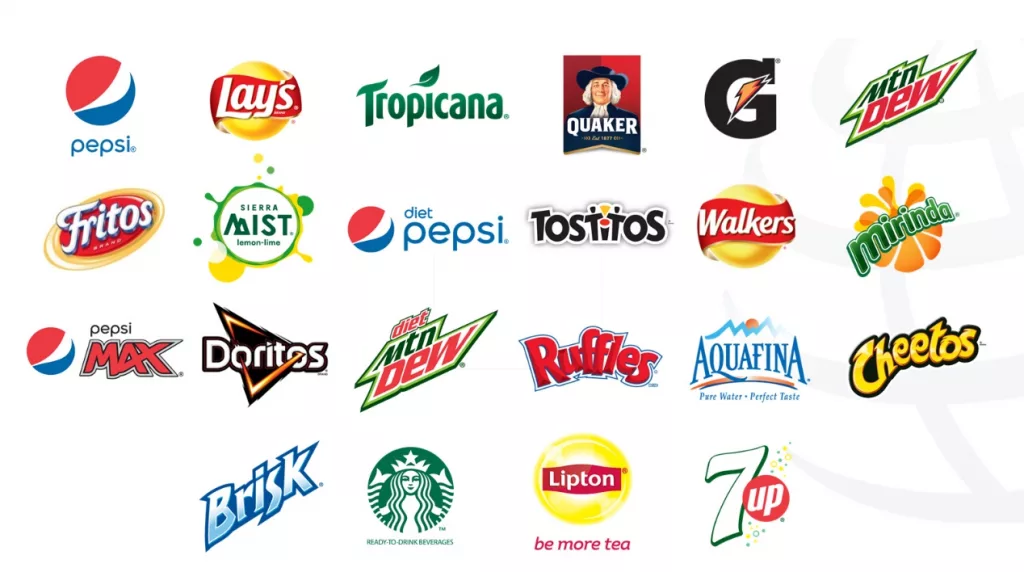Global juggernaut Pepsico is perhaps best known to consumers for its ubiquitous food and beverage brands, such as Pepsi, Gatorade, Lays, Doritos and more. Within industry circles, it is also famed for its spearheading of new and innovative design practices. Everything from packaging to logos, and digital media to key brand visuals, have set the standard for others to follow for decades. Pepsico prioritise design to such a degree that every year they produce a book on their design-led innovation.

Source: Flipboard.com
Pepsico offices are always colourful celebrations of the company’s design work, showcasing different brands and creating environments that are at once playful and professional. When they were renovating an office in Chengdu in November 2022, they faced a challenge: how to realise their aesthetic vision, while including materials that would maintain a comfortable acoustic balance.


Why is this a challenge? Acoustic product treatment with a twist.
There is a core conflict at the heart of this aim, achieving acoustic control while maintaining intricate design. Namely, for graphics to be printed at a high level of detail, they ordinarily require a flat, solid surface such as paper or concrete, wood or plastic. These are surfaces to which ink or toner can adhere or penetrate, with as much detail as modern printing methods will allow for. The issue with surfaces like these from an acoustics perspective is that when sound waves hit them, not much of their energy is absorbed. Instead, much of it is reflected back (see picture below). In an enclosed space, such as an office, this creates reverberation.
Materials used for acoustic control tend to be porous or fibrous. By creating an irregular surface, they diffuse soundwaves by breaking them up and sending them in different directions. By utilising depth, they allow for absorption of sound waves, reducing the kinetic energy of the reflected sound.

The Solution
In recent years, innovative products such as Zenfeel’s Acoustic Panels have provided an acoustic product treatment to this challenge. Through an intelligent use of new materials and printing techniques, Zenfeel’s acoustic panels can be printed on with a high degree of detail, without losing colour vibrancy, and they fit seamlessly onto walls and other fixtures. For the Pepsico offices, they provided a perfect solution.


No one would guess that the large blue wall-panel behind the Pepsico logo is in fact a series of Acoustic Panels. Zenfeel takes pride in being able to complete complex textural design, here manifested in hollowed-out lines, assorted to create a pattern that is at once pleasing to the eyes, and effective in reducing reverberation in the room.

Here we can see a more muted, but nevertheless pleasantly intricate set of acoustic panels that have been coloured and custom-shaped to create an irregular tiling pattern. The effect is to make what might ordinarily be a bland seating area feel distinctive.

In the above cases, acoustic product treatment in more exuberant colours and patterns give a light-hearted edge to an open-plan office and a break room. Combined with more austere design elements like the circular hanging lights and light-wood surfaces in the break room, they ensure a mixed atmosphere of a playful but mature workplace.



Zenfeel’s Groove Cut Acoustic Panels in the meeting rooms above maintain a comfortable control over reverberation, while allowing key Pepsico design elements to flourish.
The Upshot
As seen in the Pepsico Chengdu offices above, there need not be a tension between applying intricate designs on wall spaces, and using acoustic control materials. Thanks to innovative acoustic products from Zenfeel, the two can be achieved simultaneously. It is thanks to these that Pepsico’s Chengdu office has been able to create a workspace that is true to the company’s vision of design-led practice.

